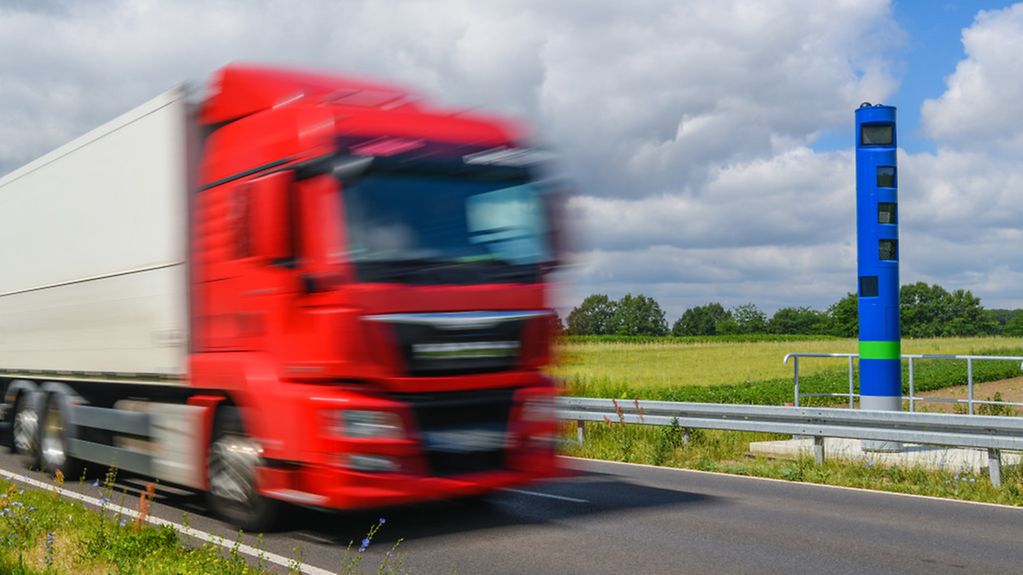Lorry toll reform
As had been agreed in the coalition agreement, lorry tolls will be linked to the amount of CO2 emitted in future. This is provided by a legislative change which the Federal Government hopes will accelerate the shift towards climate-neutral drive systems. After all, a third of all CO2 emissions in the transport sector are currently accounted for by commercial vehicles.
2 min reading time

The lorry toll was introduced in 2005. In future, it is to be linked to the amount of CO2 emitted.
Photo: picture alliance/dpa/Patrick Pleul
Why is the Federal Highways Toll Act being changed?
The goal of this legislative proposal is to implement the change to the Eurovignette Directive that entered into effect in March 2022. Among other aspects, this change provides for a CO2 differentiation of lorry toll for heavy commercial vehicles by 25 March 2024 at the latest, as well as for all lorries with a technically permissible maximum laden mass of 3.5 tonnes and up to be included from 25 March 2027.
CO2 differentiation of the lorry toll is a key measure for reducing greenhouse gas emissions in transport and for reaching the climate protection goals. The introduction of this rule is a clear signal that makes using lorries with alternative drive systems far more attractive for the freight traffic industry.
What the coalition agreement says: “In 2023 we will implement a CO2 differentiation of lorry tolls, include commercial freight traffic vehicles of 3.5 tonnes and up, and will introduce a CO2 surcharge, provided that a double burden due to the CO2 charge is ruled out. The additional income will be used for mobility projects.”
What are the individual changes?
As agreed in the coalition agreement, the following changes are to be made to the Federal Highways Toll Act:
Introduction of a CO2 surcharge: From 1 December 2023, a new toll component (“proportional toll rate”) will be introduced for the cost of traffic-related CO2 emissions: a CO2 surcharge of EUR 200 per tonne of CO2. This means that toll rates will comprise four components in future: infrastructure, air pollution, noise pollution and CO2 emissions costs.
Earmarking of toll revenue: New arrangements will apply for the way in which toll revenue is used. Toll income is earmarked for improving federal highway infrastructure and for measures in the area of mobility with a focus on the federal rail network.
Obligation to pay toll for lorries weighing 3.5 tonnes and up: From 1 July 2024, the obligation to pay toll will be expanded to include lorries with a technically permissible maximum laden mass of 3.5 tonnes and up. Tradespeople’s vehicles with a technically permissible maximum laden mass of less than 7.5 tonnes are exempt from tolls.
Emission-free vehicles: Emission-free vehicles will be exempt from tolls until 31 December 2025. From 1 January 2026, a proportional toll rate reduced by 75 percent will be charged for infrastructure costs, plus the proportional toll rates for air and noise pollution.
How much extra revenue will be obtained?
The Federal Ministry for Digital and Transport that is in charge of this issue expects that CO2 differentiation for lorries weighing 7.5 tonnes and up will lead to 26.6 billion euros of additional revenue between 2024 and 2027. Extra revenue due to the inclusion of lorries weighing 3.5 tonnes and up is expected to be 3.9 billion euros between 2024 and 2027. 1.8 billion euros thereof are accounted for by CO2 differentiation.